











Pages 4-7, 25















May 2024 • Volume 13, No. 7
CEO Michael Shepard
VICE PRESIDENT OF CONTENT Leon Espinoza
EDITORIAL DIRECTOR Mike Teegarden, CCC
DEPUTY EDITORIAL DIRECTOR
Noble Sprayberry
SENIOR EDITOR Jennifer Paton, CCC
FLORIDA CURRENTS EDITORS
Chasity Anderson, CCC; Valeri Pearon
ASSISTANT EDITORS Victoria Hampton, CCC; David Herder, CCC
ASSOCIATE EDITOR
Nina Todea
PUBLICATIONS PRODUCTION
SENIOR MANAGER
Elizabeth Beatty
PUBLICATIONS COORDINATOR
Alyssa McDougle
Members acknowledge that $4.31 a year, plus postage, is the cost to publish 12 issues a year of FLORIDA CURRENTS ISSN 23276304 (USPS 8300). Published by Pioneer Utility Resources Inc., 5625 NE Elam Young Pkwy. Ste. 100, Hillsboro, OR 97124—a not-for-profit Oregon cooperative corporation—the magazine serves the communication needs of consumerowned electric utilities in Florida. Preferred Periodicals postage paid at Hillsboro, OR 97123 and at additional mailing offices.
Postmaster: Send address changes to 5625 NE Elam Young Pkwy., Ste. 100, Hillsboro, OR 97124-6422.
HOW TO CONTACT FLORIDA CURRENTS
Subscription services:
Nonmember subscriptions $15 U.S. a year; $25 foreign a year. Prepayment required. Allow 4-8 weeks for first issue. Identify local edition desired. Have a problem receiving your magazine? Utility members should contact their utility office. Nonmembers call 503-357-2105 or email mailingdept@pioneer.coop. Back issues:
Back issues and extra copies are $3 each, prepayment required. Supply is limited. Identify edition, month and year. Call first to check availability. Contact Pioneer Utility Resources: P.O. Box 1306, North Plains, OR 97133-1306; 503-357-2105; email: mailingdept@pioneer.coop.
DISPLAY ADVERTISING INQUIRIES
American MainStreet Publications 611 S. Congress Ave. Ste. 504 Austin, TX 78704-1714; 800-626-1181 or 512-441-5200; amp.coop.




For additional content, search @FloridaCurrents on your favorite social media sites and floridacurrents.com.

Diving
Benwood shipwreck comes alive when the sun goes down Up Close, Page 10
© 2024 Pioneer Utility Resources. All rights reserved. Reproduction in whole or in part without written permission is prohibited. Direct reprint requests to editor@floridacurrents.com or for more information, visit www.pioneer.coop. Co-op Pages: 4-8, 25-26, 28-29, 32 Photo Hunt 18 Get Outside 20 Planner 22 Before You Go 30 Meatless Meals In the Kitchen, Page 16
Living the High Life Hot air balloon rides make for a magical experience Spotlight, Page 12
By Maura Giles
One of my favorite things about summer is fresh, homegrown food, whether it’s picked up at the local farmers market or shared from the abundance of a garden with a neighbor. It’s amazing how just a few seeds, some fertilizer and water can turn into a bounty.
When I think about energy efficiency, I think about that bounty of food and how with just a few simple actions, you can use less electricity and reap the rewards of energy savings.
You don’t need to be a farmer or botanist to know plants need water—just like you don’t have to be a lineworker or engineer to know adjusting the thermostat or turning off lights can reduce your monthly electric bill. In fact, if you read Glades Electric Cooperative’s publications regularly and follow us on Facebook, you know there are a lot of things you can do at home to save electricity and money.
Summer months bring some of the highest energy bills of the year. Cooling your home accounts for a large portion of your monthly energy use, and the hotter it gets, the harder—and longer— your air conditioner works to keep you cool.
One of the great things about being part of GEC is that we’re locally owned by our members. Instead of making profits, we can
When summer temperatures rise, so do our energy bills. Here are a few ways you can reduce energy use and grow your summer savings.
1. Raise your thermostat. The smaller the difference between the indoor and outdoor temp, the more you save.
2. Install window coverings like blinds or light-blocking curtains to prevent indoor heat gain during the day.
focus on helping our community. That’s why we’ve adopted tools to help keep your money in your wallet.
Manage energy use at home and save money with these easy tools:
• Take control of your use. Use the SmartHub app to track your energy use. You can see how much energy you use daily and note the hours of the day with the highest use to help home in on where you can save.
• Incorporate energy intelligence: Glades Electric will soon use energy intelligence tools to send members detailed insights and proactive alerts. Members will be able to receive a breakdown of use by appliance and have access to personalized charts, tools, detailed savings tips and projected energy costs.
If you’re having a difficult time paying the higher bills that come with increased use in the summer, contact us to learn about our budget billing program.
Most people don’t know everything about electricity, and that’s why GEC is here to help you. We are knowledgeable people with local jobs, working for our neighbors to ensure there is electricity available when you need it.
We can work with you to find more ways to save energy and money. Call us at 863-946-6200. n
3. Seal leaks with caulk and weatherstripping around windows and exterior doors. Air leaks force your air conditioner to work harder and run longer than necessary.
4. Run ceiling fans for additional cooling, but turn them off when you leave the room.
5. Lower your water heater thermostat to 120 degrees to reduce standby heat loss.
Source: Department of Energy
By Anne Prince
The energy industry is undergoing significant change driven by technology and the transition to more sustainable forms of energy. Innovation is essential in addressing these challenges and ensuring a continuous, reliable and affordable power supply.
Glades Electric Cooperative has always leaned into change as we explore new ways to meet your energy needs.
Investing in smarter technologies can enhance the monitoring and control of electricity flow so we can respond swiftly to change.
Smart electric meters collect data on how electricity is used. This helps in prioritizing and dispatching crews during an outage, reducing restoration time. Even before adverse weather is here, advanced analytics, combined with data on weather patterns and other information, allows us to be proactive.
Today, we depend on electricity more than ever before. From vehicles to farming equipment to home heating options, more products and appliances we depend on run on electricity.
Interest in electric vehicles is growing. GEC is available to help members make informed decisions about electric vehicles, including
The energy industry is changing, but electric co-ops are known for adapting to their local members’ needs.
The energy industry is changing, but electric co-ops are known for adapting to their local members’ needs.
As we plan for changes and cha enges ahead, innovative solutions are essential.
As we plan for changes and cha enges ahead, innovative solutions are essential.
Here are a few ways co-ops are innovating for the future.
Here are a few ways co-ops are innovating for the future.
electric charging options and capacity requirements for the home.
Automakers are transitioning many or all new vehicles to electriconly models in the next 10 years. All electric providers must plan to have the necessary infrastructure in place to meet future EV charging needs—without jeopardizing the ability to provide reliable power.
Glades Electric is driven by a commitment to community and member satisfaction. As consumers become more proactive in managing their energy use, the cooperative is providing new ways to help members lower their use and save money.
Energy use tools such as SmartHub and our new energy intelligence analytics—available to members soon—are just a few examples of how GEC can help you take control of your energy use.
GEC is part of a network of 900 electric co-ops nationwide.
While we are locally-owned by the members of the co-op, we also have the advantage of working with co-ops across the country to share ideas and leverage the innovations our colleagues might have tried out first.
Cooperatives are collaborators instead of competitors. It’s a unique aspect of our business model, and we’re stronger because of it.
Use of Advanced Technologies
Drones can aid in power line inspection and maintenance.
Use of Advanced Technologies
Drones can aid in power line inspection and maintenance.
Smart meters provide real-time data and help pinpoint service issues.
Smart meters provide real-time data and help pinpoint service issues.
Preparing for Increased Energy Use
Preparing for Increased Energy Use
The demand for electricity is increasing as more technologies are electri ed.
The demand for electricity is increasing as more technologies are electri ed.
Co-ops are exploring innovative solutions such as battery storage to meet demand.
Co-ops are exploring innovative solutions such as battery storage to meet demand.
Energy Solutions for Members
Energy Solutions for Members
Co-ops provide innovative energy use monitoring tools, e ciency tips and exible bi ing options to help members manage their energy use.
Co-ops provide innovative energy use monitoring tools, e ciency tips and exible bi ing options to help members manage their energy use.
Strength in Numbers
Strength in Numbers
By working with and learning from other co-ops, we are uniquely positioned to improve service for our local communities.
By working with and learning from other co-ops, we are uniquely positioned to improve service for our local communities.
This summer, Glades Electric members will have new tools to understand, monitor and manage energy use.
SmartHub will soon have Bidgley UtilityAITM widgets integrated to provide members appliance-level insights into energy consumption and offer personalized recommendations.
Members will have access to energy details that will itemize energy use and costs across up to 12 appliance categories for a better understanding of energy choices.
Bill analysis features will enable members to evaluate the impact various appliances have on their bills over time. Bill projections will be available
to inform members about costs “so-far” in the billing cycle and estimated costs at the end of a cycle.
High-use alerts will also warn members when use is abnormally high, and help prevent high-bill shock.
With the addition of these tools, members are armed with detailed insight into the primary drivers of their energy costs.
Be sure to take advantage of this new resource and update your home profile when prompted.
Applying this knowledge from Bidgely insights to make adjustments in use can save members each month on their power bills—great timing with the summer heat here soon.

Energy Details
Bill Analysis
Similar Home Comparison
Bill Projection
Monthly Summary by Appliance
High-Use Alerts
And more




New energy insight tools provide consumption details, bill analysis and bill projections to help members make smart energy choices and manage costs. Pictured are Energy Detail and Bill Analysis features coming soon.
Are you considering investing in a rooftop solar system? It’s a big decision with many factors to consider, which can be overwhelming.
We have tools to help members make informed decisions regarding investments in new technologies. Members are often surprised when the savings do not meet expectations.
GEC’s rooftop solar assessment tool helps members estimate the potential benefits of installing a solar panel system. By inputting relevant information such as location, energy use and roof characteristics, members can receive personalized assessments regarding potential cost savings and return on investment. This will help members understand how the full cost of the system compares with potential savings. Contact GEC to learn more about net metering for solar installations. Email solar@gladeselectric.com or call 863-946-6200.
Similarly, Glades’ electric vehicle savings calculator enables members to evaluate the economics of buying and charging an electric vehicle.
By inputting data on your current vehicle, driving habits and electricity rates, users can estimate the potential savings associated with switching to an EV.
Glades Electric Cooperative offers these tools to help members make choices that make sense for their wallets. Check out these tools to make an informed journey to new technologies less overwhelming.


















What is it?
Operation Round Up is a program that allows members to round up their monthly bills to fund projects benefiting community members in need.
Nine members serve on the board of directors for Glades Electric Charitable Trust, a 501(c)(3) nonprofit organization. Directors review applications and approve grants.










How does it work?
$138 55 cents to your neighbor in need. The average yearly contribution is $6 per member.


Funds from Operation Round Up go right back into the communities we serve.




8,227 accounts participate in Operation Round Up or Operation Round Up Plus. Round Up Plus allows members to give even more, adding any set amount, $1 or more, to their bills each month.
45%
How can I help?



Sign up for Operation Round Up in the SmartHub app, scan the QR code, stop by the office or call Member Services at 863-946-6200. $6 The average yearly donation per member. Small change that makes a big difference in our communities. Join to be part of the change.

raised through Operation Round Up and Round Up Plus in February 2024.
Did you know?



$4,337.15









How can I get help?














The participation rate it would take to raise more than $70,000 annually to support our communities. 75%
If you or a member you know needs financial assistance, please complete an application at: www.gladeselectric.com/community/operation-round-up.















































Although a beautiful dive during the day, the wreck of the freighter Benwood comes alive at night in a sort of circus show of underwater creatures.



Schooling fish, sharks, eels, crustaceans and turtles rest here at night. Parrot fish sleep in a mucus bubble they create to protect against parasites. Lobsters and crabs shuffle along the rusting surface of the wreck. Small shrimp make snapping noises to deter predators.
“Lucky divers might even get to see an octopus,” says Tess Stundis, with the Amoray Dive Center in Key Largo.










The wreck of the Benwood is popular with divers because it is still relatively intact despite years of abuse by the sea and countless hurricanes.


Amoray has offered seasonal night dives to the Benwood for nearly 30 years.














In the early morning of April 9, 1942, the Norwegian freighter Benwood was traveling from Tampa to Norfolk, Virginia, with a crew of 38 and a load of ore and other supplies for the U.S. military. Because German submarines were known to be in U.S. coastal waters, the Benwood was armed with bombs, depth charges and rifles.

With the threat of attack by the Germans, the Norwegian captain, was forced to navigate the shallow waters off the Keys without light. of













Unfortunately, also blacked out and in the same area was the American steam tanker Robert C. Tuttle, heading to Atreco, Texas, after dropping off a load of oil. With little warning, the Benwood’s bow struck the Tuttle’s port side, causing severe damage to the Benwood. The ship’s captain and crew abandoned ship 30 minutes after impact.
Although the Tuttle did not sustain severe damage in the collision, it later sank after striking a German minefield near Virginia Beach, Virginia.

The Benwood came to rest at depths between 25 and 50 feet a short distance from Molasses Reef.
In the 82 years since its demise, the Benwood has become one of the Keys’ most-loved dive sites. Every spring and summer, at least two Key Largo dive shops offer night dives to the wreck. There, divers discover the ship, with the help of the sea’s artistry, has transformed itself into an artificial reef encrusted in brightly colored corals, sea fans and sponges in a palette of yellows, oranges, greens, purples and blues.



The night dive offers about an hour of underwater exploration. Divers can jump into the warm Atlantic waters shortly after sunset to explore the wreck with a dive buddy or a paid guide.
Although the Keys have several famous artificial reefs—intentionally sunk ships like the Duane, Eagle, Spiegel Grove







and Thunderbolt—in deeper waters, the Benwood offers one of the best night dives in the country.

“Our night dive is dependent on current sunset times,” Tess says. “We try to arrive at the Benwood 20 minutes prior to sunset, so that those divers who wish to stay onboard to view the sunset in its entirety prior to their dive can do so. Other divers—who want to dive early and get their bearings with daylight left—can start their dive early and have around an hour or more of bottom time with the final 40 minutes in complete darkness.”
Turtles are clearly the stars of this underwater show. On any given night, it is not uncommon to spot five or more turtles sleeping on the skeleton of the Benwood. Unphased by divers and flashlights, green sea turtles can sleep underwater for several hours before surfacing. They wedge their heads and bodies along the crevices of the wreck to protect from predators.

Jennifer Wheeler, an artist and divemaster living in Key Largo, was mesmerized the first time she explored the Benwood last summer. Having done night dives in Monterey Bay, California, and Indonesia, she is convinced the Benwood is magical at night.
“Entering the water and seeing the wreck
for the first time is like something out of a mystery book or movie. The spirit of the ship seems to come alive at night, and there is a sort of reverence that is called for in the dark,” Jennifer says.
She says of her last night dive on the wreck, “I just floated there, face-to-face with a snoozing turtle, for what seemed like forever. My heart was so happy, so full, and I hope everyone gets to experience that at least some time in their lives.”

Because this dive can reach depths of a little more than 50 feet, a safety stop at 15 to 20 feet is recommended for a few minutes of decompression. Even at that depth, the experience unfolds in front of your mask. In the summer, the warm water is full of bioluminescent creatures that light up the ocean water like sparks of pixie dust. Divers often shut off their dive lights to see the show. Tess says the safety stops are one of her favorite aspects of the dive.
“The bioluminescence is breathtaking, along with the illuminated comb jellies that light up the sea,” she says.


BACKGROUND:

The infinite light created by the bioluminescent creatures is humbling to divers like Jennifer.
“The specks of light in the unending darkness makes one feel small in a good way, like you’re part of something bigger, beautiful and endless,” she says.






























































































































Hot air balloon rides make for a magical experience
By Jen Calhoun


One person described it as flying in the hand of God while getting a brain massage.”
— Kim McCourt, hot air balloon pilot

















But when his family moved to the flatlands of Florida, he had to find a new way to see the world. In 1998, he took his first flight in a hot air balloon.
“I learned that ballooning is, well, kind of magical,” says Kim, a licensed hot air balloon pilot in the Orlando region. “There’s the exploration part of it, and you’ve got Mother Nature all around you.”
These days, Kim often travels the skies with tourists who want to experience a ride they can’t find at the area’s theme parks. For many, it’s a way to fly without being contained in the metal tube of an airplane.


“In the balloon, you can see so much more, and you can actually feel everything,” Kim says. “You can breathe the air.”
There’s a spiritual component, too, says Mark West, vice president of the Balloon Federation of America. Mark, a former Navy pilot, also served as president and chief engineer of Aerostar International, once the country’s largest hot air







balloon manufacturer.
“Ballooning has an incredible amount of magic to it,” Mark says. “Virtually everyone who sees one is enamored with it. I suppose they’re kind of representative of breaking free of the bonds of Earth and floating away.”
The use of hot air balloons started in the late 1700s, when two French brothers—Joseph Michel and Jacques Etienne Montgolfier—realized that capturing smoke in a bag would cause the bag to rise. After experimenting with larger and larger bags, they knew they were on to something. Humankind, they thought, might finally fly.
By November 1783, King Louis XVI of France allowed the first manned hot air balloon flight to take off from the Gardens of Versailles. Over the next months and years, hydrogen and helium balloons were invented, and newer technologies kept the new mode of travel going.

In 1960, Aerostar International’s parent company, Raven, developed an onboard heating system that gave pilots a way to control and sustain the flight.
“That was the beginning of what we know today as hot air ballooning,” Mark says.
It can take years of practice to master navigating a craft that





floats on air, Kim says. It’s both an art and a science. Among other things, pilots need to understand weather patterns, physics and the mechanics of the balloon itself. Practice helps, too.
“To learn to fly a balloon, you’ve got to go out and hit the ground really hard lots of times, then learn how not to do that,” he says with a laugh. “Landing and navigation are the tough parts.”


In Florida, hot air balloon rides are popular for families celebrating a special occasion or tourists looking for a new experience. Some passengers want to make memories with their families, while others go to commemorate important events, like marriage proposals, bucket lists or spreading the ashes of loved ones into the sky.
“There are all kinds of stories,” Kim says. “The only things that stay the same are the sun coming up and people smiling.” But as wide-open spaces dwindle, so do the balloon rides. Pilots simply don’t have enough space to land. Weather has also been a factor because unreliable winds can ground a pilot. Kim says he’s seen this firsthand.
“Over the last 15 years, the weather went from 275 days we could fly to probably 100 days,” he says. He worries other factors could cause ballooning to take a hit, too.
“Fabric, wicker, propane, repairs and parts are way more expensive these days, so it takes more money to maintain them,” Kim says.
Despite the challenges, Kim still grins like a kid after an earlymorning flight.

These days, hot air balloons are used for experiential tourism, fun, advertising and competition.


“There’s nothing like it,” he says. “When we lift off and the sun starts to rise, we might rest at the top of a tree and stare clear down to the bottom of a pond. Then we’ll take off again and maybe rest right on top of the water where the mist is coming off the surface. It’s up and down, up and down—gently. One person said it was like flying in the hand of God while getting a brain massage.”
Mark says balloonists almost always try to describe the sensation of floating on—and with—the air.

“One of my good friends said it was ‘having a destiny without a destination.’ ” Mark says. “I think it attracts people who want to enjoy the beauty of the Earth and want to experience that kind of freedom.”
To catch a ride with Kim McCourt, visit greaterorlandoballoonrides.com. For more information on hot air ballooning and the people who are passionate about it, visit the Balloon Federation of America’s Facebook




page or find them at bfa.net.
































































After a year or two of experimentation and invention, brothers Joseph Michel and Jacques Etienne Montgolfier publicly launch their version of a hot air balloon, the Seraphina, in Annonay, France. Made of linen or silk and paper and held together by 2,000 buttons, the Seraphina was powered by burning straw and wool in an attached fire pit. It carried no passengers. The balloon landed in the middle of a vineyard a little over a mile from where it had taken off.









landed in the middle of a vineyard a little over
The first balloon flight with passengers launches from Versailles carrying a duck, a rooster and a sheep. The animals made it down alive. However, sources say the sheep kicked the duck and damaged its wing. King Louis XVI of France was pleased to learn that animals could breathe so high up.














Jean-François Pilâtre de Rozier, scientist and historian for King Louis XVI, unofficially becomes the first person to ride in a hot air balloon. However, the balloon was tethered, or captive, and only reached an altitude of 84 feet.
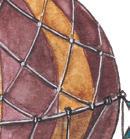













Jean-François Pilâtre de Rozier and another passenger take the first official manned flight untethered in Paris. The flight lasted about 25 minutes and reached an altitude of about 500 feet. Less than two years later, Jean-François and his passenger would become the first people to die in a hot air balloon crash during a flight from France to England.











Jacques Charles, a French physicist experimenting with hydrogen—or gas—balloons, pilots one with a few colleagues. They traveled 25 miles in less than two hours. They also carried a barometer and a thermometer. Afterward, gas balloons became the preferred method of ballooning.
Sources: DragonFly Balloon Adventures, Virgin Balloon Flights, National Balloon Museum



Cheesy Burrito Bake
2 tablespoons canola oil
2 bell peppers, sliced
1 medium onion, sliced
1 teaspoon cumin
2 cups water
1 cup brown rice, uncooked
12-ounce can evaporated milk, divided
Heat oven to 350 F.
1 cup shredded cheddar cheese
4-ounce can diced green chiles, undrained
16-ounce can refried beans
6 8-inch wheat tortillas
Salsa, optional
Guacamole, optional
In a large skillet, heat canola oil. Cook peppers and onion with cumin until tender. In a saucepan, add water and brown rice. Cook for 45 minutes.
In a second saucepan, add 1¼ cups evaporated milk, cheddar cheese and green chilies. Cook over medium heat until cheese is melted and smooth. Stir 3/4 of the cheese mixture in with the cooked rice. Set the remaining cheese sauce aside.
In a medium bowl, add refried beans and the remaining evaporated milk. Microwave for 3-4 minutes. Lay out tortillas. Layer refried bean mixture, rice mixture and pepper-onion mixture. Roll into burritos and place in a baking pan. Top burritos with the remaining cheese sauce. Bake for 20-25 minutes. Garnish with salsa and guacamole, if desired.
Source: Culinary.net
1 large sweet apple
2 portobello mushrooms
1/4 cup olive oil, divided
1 tablespoon lemon juice
2 garlic cloves, minced
1 teaspoon oregano
1 teaspoon salt
1/2 cup herbed goat cheese
2 brioche buns
2 large pieces butter lettuce
2 tablespoons mayonnaise
Heat the grill to medium heat. Slice apples horizontally into thick round wedges. Remove seeds using a fork. Remove portobello stems.
In a small bowl, combine 1/8 cup olive oil, lemon juice, garlic, oregano and salt.
Using a basting brush, coat portobellos on both sides with the olive oil mixture. Grill stem sides down for 2 minutes, then flip. Add goat cheese to portobellos. Grill for 2-3 minutes until cheese is melted. Remove from grill. Use remaining olive oil to coat apple rounds. Grill apple rounds for 1-2 minutes per side to lightly char.
Serve portobellos with apple rounds on brioche buns with lettuce and mayonnaise.
Source: Envy Apples
71/2 ounces white beans, drained and rinsed
1 egg, beaten
1/2 tablespoon water
14 ounces jasmine rice, cooked and cooled
4 ounces golden beets, cooked and grated
3 ounces goat cheese, crumbled and divided
1 tablespoon finely chopped fresh dill
1/4 teaspoon salt
1/4 teaspoon black pepper
2 tablespoons olive oil, divided
12 leaves bibb lettuce
1 cup arugula
2 tablespoons Sriracha sauce
In a food processor, pulse beans, egg and water until mashed.
Transfer the bean mixture to a large bowl. Add rice, beets, 11/2 ounces goat cheese, dill, salt and pepper. Stir until combined. Divide the mixture into six portions. Shape into 1/2-inch-thick patties.
In a large, nonstick skillet over medium heat, heat 1 tablespoon of oil. Cook patties in two batches, 3-5 minutes per side, or until golden brown and heated through. Add remaining oil, as necessary.
Place two lettuce leaves together, overlapping ends to form a pocket. Place a patty inside the lettuce pocket. Top with arugula and remaining goat cheese. Drizzle with Sriracha sauce. Repeat with remaining burgers.
Source: Success Rice
1/3 cup olive oil
3 tablespoons balsamic vinegar
2 tablespoons minced red onion
1 tablespoon Dijon mustard
1 teaspoon honey
1/2 teaspoon salt
1/4 teaspoon black pepper
2 cups jasmine rice, cooked and cooled
5 ounces arugula
1 cup pomegranate seeds
1/3 cup slivered almonds, toasted
Crumbled goat or blue cheese, optional
In a large bowl, whisk together oil, vinegar, red onion, mustard, honey, salt and pepper.
Add rice, arugula and pomegranate seeds to the bowl. Toss to coat thoroughly. Sprinkle with almonds.
For added flavor, top the salad with crumbled goat or blue cheese.
Source: Minute Rice
5 cups water
1 pound asparagus
Ice water
2 teaspoons vegetable oil
1/4 teaspoon salt, plus additional to taste, divided
1/4 teaspoon pepper, plus additional to taste, divided Flour, for dusting
Heat oven to 400 F.
1 sheet frozen puff pastry, thawed
1 cup grated fontina cheese
1 cup grated gruyere cheese
1 tablespoon shallot, minced
2 egg yolks
3 tablespoons milk
1/4 teaspoon nutmeg
1 lemon, zest only
In a large skillet, add water and asparagus. Cook for 5-8 minutes until asparagus is bright green. Drain asparagus and soak in ice water.
In a large bowl, mix drained asparagus, vegetable oil, salt and pepper until combined.
Flour surface area. Using a rolling pin, roll out the pastry to a 10-by-16-inch rectangle. Transfer the pastry to a parchment-lined baking sheet. Prick the pastry with a fork. Bake for about 12 minutes or until golden brown. Cool slightly on the baking sheet.
In a large bowl, mix fontina cheese, gruyere cheese, shallot, egg yolks, milk, nutmeg, salt and pepper until combined. Spread cheese over the pastry, leaving 1 inch around the edges. Lay asparagus over the cheese mixture.
Bake for 5 minutes or until the cheese has melted. Sprinkle lemon zest over the tart before serving.
Source: Culinary.net

By Dave LaBelle
It’s a real paradox for me: I hate war, but I love and honor those who have sacrificed their lives for the freedoms we enjoy.
Michael Rummel called me from his home in Southern California and asked if we could talk. He had met my son at Field of Dreams in Iowa and had read my latest book in 2019. Michael was struggling with some unfinished business—a promise he had made in Vietnam to fellow Marine Ron Denton some 50 years earlier.
While drinking beer in Vietnam, the men had made a

Renowned author, photographer and lecturer
Dave LaBelle has captured special moments for more than half a century. For more of his writings, visit davidlabelle.com and bridgesandangels.wordpress.com.
pledge: Whoever died first, the other was to visit the deceased’s grave, drink a beer, say a few choice “Marine things,” then crumple the can and spike it into the earth. Silly perhaps, but a promise nonetheless.
Michael didn’t know where Ron was buried, but a search led him to Bowling Green, Kentucky, where Ron had lived the last part of his life.
“Fate is telling me to go to Bowling Green and say my special goodbye to Ron,” Michael said.
But he was still on the fence about going. Hearing how troubled he was, I encouraged him to find Ron’s grave and keep his promise. Because I once lived in Bowling Green while teaching at Western Kentucky University, I told him I would meet him there.
“I have struggled with that decision for seven years now,” Michael confessed. “Your response has tipped the scale in
favor of doing it.”
He made the trip and completed his mission, thankful he did.
This brings me to another short but important story.
A young soldier from the small town I was living in had been killed in action. Out of respect, I dressed appropriately and photographed the sensitive outdoor burial service from a distance using a telephoto lens.
Upon seeing me, a decorated military officer assigned to the burial detail left the grave site and approached me as I photographed the interment. He firmly asked me not to photograph.
I respectfully refused his request.
“This young man died for the very freedoms you are asking me to deny,” I told him.
Unsure how to respond, he left me alone.
On this Memorial Day, make a photograph that honors the day and those who gave their lives in service. Remember, you are not taking anything but giving and honoring the fallen and their families when you celebrate their sacrifices. Move slowly and with reverence when documenting any service. Not overshooting is important.
Email your best image (just one, please) with caption information, including an explanation of how it affects you, to GPH@pur.coop. We may share submissions on our website and social media channels.
I meant no disrespect to the officer, the family or the fallen soldier. To the contrary, I was showing them respect for the laws and rights of our nation and honoring the young man’s service.













to move around with a portable oxygen concentrator. Up to 12 hours, 45 minutes of battery life with the Inogen® Rove 6™ 3


114-day risk-free trial- Return within 14 days of purchase for a full refund of purchase price
2When used for less than 8 hours per day within the expected service life 3Inogen Rove 6 battery life up to 12 hours, 45 minutes between charges when used on flow setting 1 with extended battery
















PM230517 EN_EX_USA | Rx Only. © 2024 Inogen, Inc. | 859 Ward Drive, Suite 200, Goleta, CA 93111 Inogen® is a trademark of Inogen, Inc. The usage of any Inogen, Inc. trademark is strictly forbidden without the prior consent of Inogen, Inc. All other trademarks are trademarks of their respective owners or holders.





USES: The Inogen Portable Oxygen Concentrator provides a high concentration of supplemental oxygen to patients requiring respiratory therapy on a prescriptive basis. It may be used in home, institution, vehicle, and various mobile environments. DO NOT USE IF: This device is not intended to be used in any way other than described in the indications for use. Do not use in parallel or series with other oxygen concentrators or oxygen therapy devices. This device is to be used as an oxygen supplement and is not intended to be life sustaining or life supporting. ONLY use this product if the patient is capable of spontaneous breath, able to inhale and exhale without the use of a machine. The conserving, or pulse dose, oxygen delivery technique used by this device is contraindicated in persons whose breathing during normal resting would be unable to trigger the device. Proper device triggering, setup and operation must be confirmed by an experienced clinician or other respiratory professional. Not for pediatric use. Not for use by tracheotomized patients. WARNINGS: The device produces enriched oxygen gas, which accelerates combustion. Do not allow smoking or open flames within 2m (6.56ft) of this device while in use. If you feel ill or uncomfortable, or if the concentrator does not signal an oxygen pulse and you are unable to hear and/or feel the oxygen pulse, consult your equipment provider and/or your physician immediately. If you are unable to communicate discomfort, you may
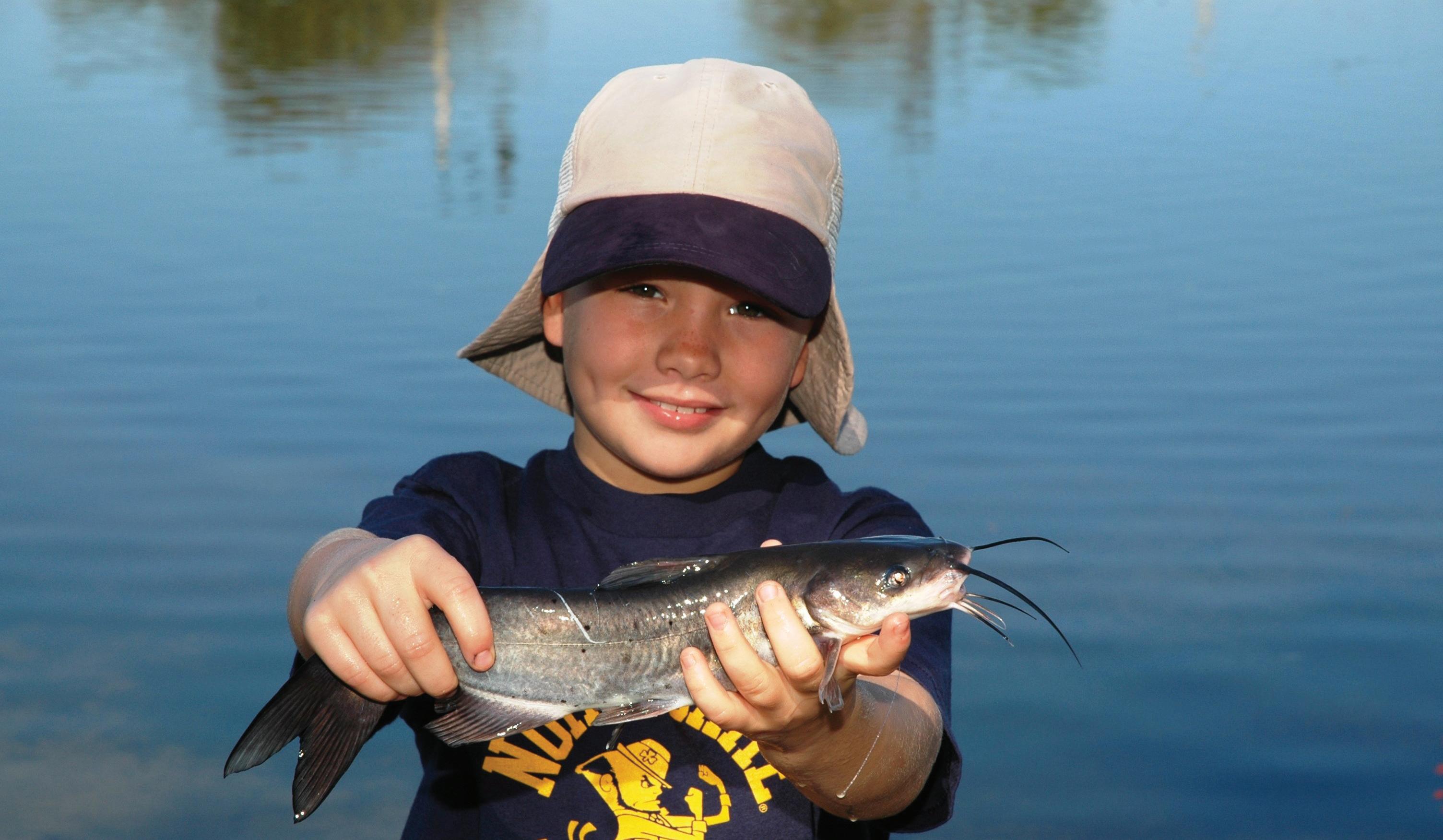
Catfish comprise a huge portion of the fish population in many freshwater systems in Florida. Anglers can often fill a boat with tasty fish, possibly even land huge ones, after spending little money.
Channel catfish—the most widespread and easiest to catch in Florida—eat almost anything. Some good channel catfish baits include live minnows or shiners, worms, nightcrawlers, crawfish, shad, fish chunks, livers, commercial baits or shrimp. Occasionally channel catfish strike bass or crappie lures.
The St. Johns River and its associated systems contain a large channel catfish population. Joe Purvis set the state record with a 44.5-pound channel catfish from Lake Bluff in Lake County.
White catfish come a close second in population and distribution. They exist throughout Florida and can tolerate some salinity in brackish coastal estuaries. White catfish eat anything that might interest channel catfish.
Jim Miller landed the white catfish state record, an 18.88-pounder from the Withlacoochee River in Marion County.
The biggest of the North American whiskerfish, blue catfish can exceed 125 pounds and give anglers big-game action without going offshore. In Florida, blue catfish inhabit the Escambia, Choctawhatchee, Yellow, Apalachicola and Suwannee River systems.
In May 2015, William Stewart III caught the Florida state record, a 69.5-pounder, while fishing the Choctawhatchee River in Washington County.
Blue catfish eat almost anything, but mainly small fish and fish chunks, especially shad.
With forked tails and bluish-gray bodies, white, channel and blue catfish look similar. Channel catfish have thick and fleshy whiskers,
or barbels, whereas blue catfish have thin, light ones.
Young channel catfish show black spots on their backs and sides. Blue catfish look stouter with humped backs and grow much larger than channel or white catfish. White catfish have some mottled coloration and more rounded anal fins than the other species.
Flatheads can also exceed 100 pounds. These predators almost exclusively eat live fish and particularly enjoy crunching small catfish, shad and bluegills. They thrive in rivers with heavy woody cover where they ambush prey, but also live in lakes and reservoirs.
In Florida, these ornery loners mainly inhabit the Apalachicola, Yellow and Escambia river systems. Lavon Nowling pulled a 69.9-pounder from the Yellow River in Santa Rosa County to set the record in August 2020.
Not everyone can afford a boat or even the gasoline to power one, but most people can usually find a good place to fish close to home. Widespread and abundant catfish can live practically anywhere, making them great targets for bank anglers.
Many parks, piers, ponds, or river or lake shorelines throughout Florida offer exciting sport for big fish. When sitting on a bank to fish, toss a few pieces of liver, shrimp or other baits into the water to attract catfish. Throw out just enough to get them interested, but not enough to feed them. n

John N. Felsher is a freelance writer, broadcaster, photographer and editor. An avid sportsman, he’s written more than 3,500 articles for more than 170 different magazines on a wide variety of outdoor topics. He also hosts an outdoor tips show for WAVH-FM Talk 106.5 in Mobile, Alabama. Contact him at j.felsher@hotmail.com or through Facebook.

FREE MATERIALS
SOON Church/Government uniting, suppressing RELIGIOUS LIBERTY
enforcing NATIONAL SUNDAY LAW
Be informed!
TBSM, PO Box 374, Ellijay, GA 30540. tbsmads@yahoo.com 1-888-211-1715





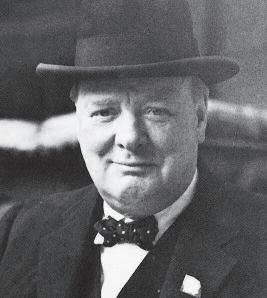
















Embark on a journey over the rainbow with our extraordinary find from the enchanting Venetian island of Murano! As I approached, the island’s kaleidoscope of brightly painted houses welcomed me with open arms, each hue seemingly more vibrant than the last. Legend has it that these colorful homes served as beacons for fishermen navigating the fog-blanketed lagoon since medieval times.
Inspired by this rich history, I sought to immortalize its beauty in the timeless artistry of Murano glass. Renowned for 500 years as the world’s finest glassblowers, Murano has seamlessly transitioned into modern-day fashion statements while retaining its age-old allure. Venturing to Murano, I enlisted the expertise of a distinguished artisan, whose skillful hands meticulously captured the essence of Murano’s iconic dwellings in the form of hand-formed beads for The Rainbow Murano Necklace.










accompanied by a complimentary matching bracelet—a perfect token of romance. Backed by our satisfaction guarantee, you can revel in its beauty risk-free for 30 days. Should it fail to dazzle, return it for a full refund, and keep the bracelet as our gift to you. While comparable Murano glass bead necklaces fetch prices upwards of $300, seize this extraordinary opportunity to own them for a fraction of the cost, exclusively at Raffinato.
Jewelry Speci cations:
• Original Murano Glass
• Necklace: 23"L; Bracelet: 7"L
• Lobster clasps

In the spirit of spreading joy, I'm thrilled to offer you The Murano Rainbow Necklace for just $39,
Murano Rainbow Necklace
$199 $39* + S&P
Receive the FREE matching bracelet with your purchase of the Necklace — a $99 value!
*Special price only for customers using the offer code.

All ages can find something new and exciting around every corner of the state. Filled with rich history, abundant natural beauty and diverse events all year, Florida has something fun for everyone.
May 1-5
Key West Songwriters Festival
The largest festival of its kind in the world, this festival includes five days and nights of introducing the faces, voices and stories behind the songs. Performances take place at numerous theaters, bars and event spaces. The opening night headliner May 1 is Dylan Marlowe, and Cole Swindell performs May 2. www.keywestsongwritersfestival.com; 305-985-0433
May 1
Apalach Ghost Tour
Take a paranormal ghost tour of downtown Apalachicola. Your guide begins telling ghost stories starting at 9 p.m., while using ghost hunting equipment to see if any spirits are around. The tour may last up to 90 minutes. Tickets are $15 for adults, $5 for 3- to 12-year-olds, and entry is free for children 2 and younger. www.apalachghosttour.com; 850-583-4662
May 2
Studios of Key West
During the First Thursday open house, the studios keep the lights on late from 6 to 8 p.m. to celebrate the newest work in their galleries. Stop in to say hello, relax with a glass of wine, tour the third-floor artist studios and see the new exhibitions in the various galleries at 533 Eaton St. www.tskw.org; 305-296-0458
May 2-5
I.Care: Trash Derby and Festival
Sponsored by the National Marine Sanctuary Foundation in support of Goal: Clean Seas, the derby begins with a team leader meeting from 6:15-7:30 p.m. Thursday at Bud N’ Mary’s Marina. Trash is collected from sunrise to sunset. Divisions include dive operators, private boat owners and land lovers. Participation is open to visitors and community members. www.marinesanctuary.org; 301-608-3040
May 4
Kids Bicycle Rodeo and Splash Day

May 18
Tupelo Honey Festival
This event at Lake Alice Park includes a variety of vendors selling honey, arts and crafts, food and plants. A car show and lots of children’s activities are also in the lineup. Entry into the park is free. Billy Lipford, known as the voice of Jackson County, returns with country, blues, rock and gospel music. At 10 a.m. and 2 p.m., The Pittman’s—out of Destin—perform a magic show. The Big Red Bus is on-site to collect blood, looking to beat last year’s total of 29 units. Using its safety trailer, Gulf Coast Electric Co-op demonstrates the do’s and don’ts of electricity.
www.tupelohoneyfestival.com; 850-832-4843

Join the city of Sebring fire and police departments for this seventh annual event at Station 14 downtown. The event starts at 9 a.m. with a live DJ, station tours and bicycle giveaways, as well as free popcorn, hot dogs, snow cones and bicycle helmets. Bring your swim attire to enjoy the splash day. www.mysebring.com; 863-471-5100

May 4
Salt Air Farmers Market
Treat your family to art pieces and fresh veggies, sweet tupelo honey and vine-ripened fruit from local farmers and artisans. This market is open 9 a.m.-1 p.m. on the first and third Saturdays. www.saltairmarket.com; 404-906-2637








Want to share a family-friendly event with the readers of Florida Currents? Enter the details at tinyurl.com/ FloridaCurrents. Make sure to submit the item at least 60 days before the event (due to press deadline). If you own rights to a print-quality photo promoting your event, include it with photo credit information.
May 11
Gulf Coast Culture Fest
This vibrant and inclusive festival celebrates the rich diversity and cultures of the Gulf Coast and its surrounding areas. This highly anticipated event brings together artists, businesses, vendors and community members for a day filled with artistic expressions, captivating live entertainment and a wide array of mouthwatering food options. By promoting unity and appreciation for different cultures, Gulf Coast Culture Fest creates an atmosphere of harmony and rejuvenation that is enjoyed by all who attend. www.gulfcoastculturefest.com; 850-466-8399
May 11
850 Foodie Festival
Beginning as a successful quarterly event in Crestview, this festival averages about 3,000 attendees per event. This is the first installment of the annual event, as organizers move away from it being quarterly. The day includes more than 80 vendors—food, product and information—plus music and more.
www.realgrillmaster.com; 850-503-5446
May 17
Cinemas in the Sand
The Santa Rosa Island Authority invites families and friends to unpack their beach chairs and blankets, dig their toes in the sand and spend the evening cozied up on Pensacola Beach while enjoying a free classic family film.
www.visitpensacolabeach.com; 850-530-3349

May 10-11
Mother’s Day Dolphin’s Tournament Fish for a Cause with Habitat for Humanity of the Middle Keys during the 18th annual Mother’s Day Dolphin Tournament. This is an angler tournament for the heaviest mahi-mahi. Angler divisions include ladies, juniors, weekend warriors and pros. The captain’s meeting is 6-7 p.m. Friday at The Island Fish Co. Lines hit the water at 7:30 a.m. Saturday, with weigh-in from 3:30-6 p.m. at Curly’s Coffee. The awards banquet is from 7-9 p.m. at Marathon Yacht Club. Anglers can fish from anywhere in the Keys and United States’ waters but must weigh in at Curly’s. www.mothersdaydolphintournament.com; 305-743-9828




It’s easy to think of our home landscapes as solitary bubbles that don’t interact with the land around them. However, our yards are becoming an increasingly important part of Florida’s ecology.
As Florida’s population rises, undisturbed areas are shrinking and becoming isolated. The state is now a network of urban and suburban areas, with rare patches of natural areas. With increasing development, wildlife movement is further hindered without an ecologically thoughtful approach to our landscaping practices.
Having an ecologically focused yard doesn’t just benefit nature. Building a diverse landscape can naturally reduce pest and disease issues, which in turn requires less effort and chemical control.
Unfortunately, turfgrass alone as a groundcover does not provide food or habitat for many wildlife species. You can improve the ecological contributions of your lawn and make it more biodiverse by introducing alternative, native groundcovers. There are plenty of options that require less maintenance than traditional turfgrass, and many benefit pollinators or other wildlife.
If you require turfgrass, you can establish biodiverse, landscaped islands instead. Fill these islands with alternative groundcovers, wildflowers or native plants. Place the islands near each other, if possible, so wildlife can easily move among them.
You may be tempted to remove dead trees from your yard, but leaving them provides housing for insects and the birds that eat them. Just be sure to move snags away from buildings.
Consider leaving some brush as well. Leaving a few piles around your yard provides cover and feeding opportunities for wildlife.
Leaf litter can also be used as mulch and fertilizer. Keeping leaves in your yard provides a place for insects to overwinter and emerge from in the spring when birds and other wildlife are ready to feed. Leaving dead stems on plants is also beneficial because this is where many pollinators hatch.
Edge the mulched areas of your yard and create paths to make it look neat.
Setting up bird houses, baths and feeders supports your local bird population. Consider installing a pond or water garden as a water source, too. Just make sure the water doesn’t remain stagnant and become a nursery for mosquito larvae.
For pollinators, you need plants to support their larval stage, as well as plants that provide nectar once they’re fully developed. Birds feed on the insects that appear, but you can also give them a varied diet by providing plants with berries.
Invasive plants are your worst enemy when trying to cultivate biodiversity.
These plants are defined as having been introduced to the area, are nonnative, and have caused—or will likely cause— environmental harm, economic harm and/or harm to humans.



Approximately 1.7 million acres of Florida’s natural areas are consumed by invasive plants, and local ecosystems have been devastated as a result. Destroying any invasives you find in your yard prevents them from taking over and stops them from producing seeds that could spread elsewhere.
Although it seems counterintuitive, you should plant natives because our insects can eat them. Finding a small amount of damage shows your plant has ecological value.
Nonnative plants are often too different from our native species for them to qualify as insect food. A lack of insects leads to a lack of birds. Instead, plant natives to support a diverse insect population that serves as a buffet for wildlife.
Don’t assume you need to replace every nonnative in your yard today. Rather, plan to replace nonnative plants as they die.
If you’ve already implemented the steps above, you’re less likely to have severe pest infestations. Pest problems thrive in monoculture systems. Increasing species diversity, density, and spatial variance can lead to declines in arthropod pests and increases in their predators.
Often, beneficial insects are unintentionally killed when pesticides are applied.
Spraying yards for mosquitos is a practice with unintentional deadly consequences for beneficial insects. Instead, only spot-treat severe problems or use baits that target specific species.
You can also take a natural route by planting insect-repulsing plants—such as marigolds—in problem areas.

Natasha Atlas graduated from the University of Florida’s Agricultural Education and Communication Program in 2021. She loves writing about unique and new varieties of flowers and plants for the Neighborhood Gardener Newsletter and its 10,000 subscribers. When she isn’t writing, she enjoys tending her own garden on her balcony.
By Miranda Boutelle
Q: I live in a manufactured home. How can I keep the inside temperature more comfortable and save on energy bills?
A: There are several tasks you can complete to improve comfort and use less energy in your manufactured home. I started my career in energy efficiency as a weatherization technician in Wisconsin. In this role, I helped people in manufactured homes by sealing ducts, adding insulation and installing new windows, showerheads, faucet aerators and lightbulbs.
More than 22 million Americans live in manufactured homes, according to the National Association of State Energy Officials. Manufactured homes represent 15% of housing in rural areas and 3% in urban areas.
Knowing how manufactured homes are built helps us understand where we can seal in savings around the house. These homes are built in factories, transported and then set up on-site. Construction in a factory reduces costs, making manufactured homes an affordable option. That lower price point can come, in part, from the use of less expensive equipment and fewer materials, such as lower-efficiency heating equipment or less insulation.
If you are considering buying a manufactured home, Energy Star-certified manufactured homes are 30% more energy efficient than standard models, with options that increase the home’s energy efficiency.
If you already live in one, you likely know manufactured homes are built in sections. One section is a singlewide home, two are combined to make a doublewide home and three make a triplewide home.
In my experience, the biggest issues are in the duct systems, which deliver heating and cooling throughout the homes. The ductwork is typically located in the cavity between the floor and the transport barrier, which protects the underside of the manufactured home while it is transported from the factory to the site. Typically, one long duct runs the length of each section of the home, with the
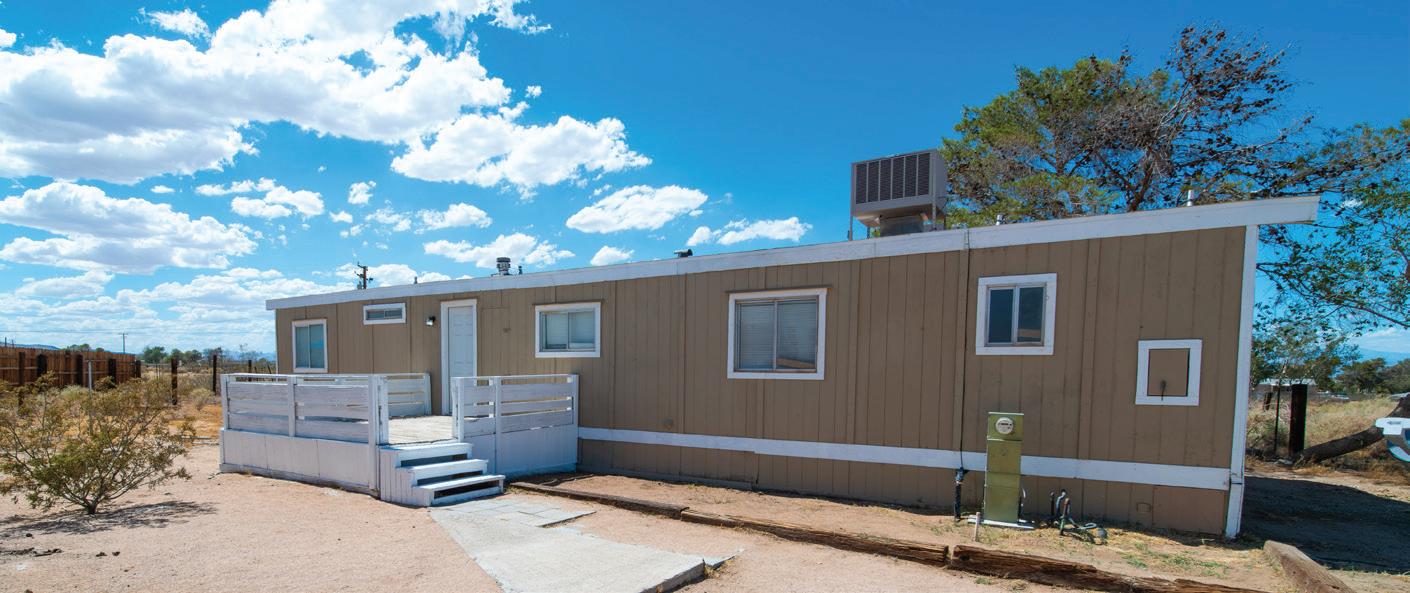
ABOVE: Manufactured homes are an important segment of housing, providing affordable living options particularly in rural areas. PHOTO BY BRIAN WANGENHEIM/ UNSPLASH RIGHT: Damaged or disconnected ducts allow the air you pay for to escape under the home. PHOTO COURTESY OF EFFICIENCY SERVICES GROUP
registers or vents cut into it.
The first step to improving efficiency is making sure all registers are accessible, open and not covered by furniture, rugs, dog beds or anything else.
Next, check your ductwork by removing the registers and looking inside. Anything inside the duct will restrict airflow, so check that it is free and clear. Use a mirror and flashlight to look into the duct or take a picture by sticking a camera or phone inside and snapping some shots with flash in each direction. I’ve pulled all kinds of things out of ducts over the years, from garbage to toys to shoes.
If you have a doublewide or triplewide, you will likely have a crossover duct, which joins the ducts in each section. The crossover duct is typically a large flexible duct with an inner liner, insulation and an outer cover to protect the insulation.
Damaged or disconnected crossover ducts allow the air you pay for to heat and cool your space to escape under the home. Often, damage is done by animals chewing or scratching to get inside the warm area. An inspection of the crossover duct requires crawling under the home. That’s a dirty job and often a tight spot, so you might choose to hire a professional.
Another place to check is the joint

connecting the sections of a doublewide or triplewide together. This is often covered by trim when the home is placed. You can caulk around the trim or remove it and caulk underneath to reduce air leakage.
Weatherstripping doors and windows to make sure they seal tightly will also reduce drafts and save energy. Some homes can benefit from additional insulation in the attic or under the floor. Those projects typically require specialized equipment or help from a professional.
Weatherization assistance programs, like the ones offered by the company I worked for in Wisconsin, provide discounted and no-cost energy-saving upgrades. Check with your county or electric utility for more information. n

Miranda Boutelle has more than 20 years of experience helping people save energy. She has worked on energyefficiency projects from the Midwest to the West Coast. Today, Miranda is chief operating officer at Efficiency Services Group in Oregon, a cooperatively owned energy-efficiency company.
This content was originally created by Efficiency Services Group LLC under contract with NRECA. NRECA retains ownership of this content. NRECA does not endorse Efficiency Services Group, its views herein expressed, nor any products or services it offers.
Do you or a member of your household require additional medical assistance?
If so, please certify the need.
If electric service for you or someone living in your home is medically essential, Glades Electric Cooperative has a procedure in place to help protect that person’s needs.
To be designated as a medically essential service member, visit your local office or download the program certification form from GEC’s website at www.gladeselectric.com/safety/hurricane-preparedness/special-needs-registry.
A person who is medically essential depends on electric-powered equipment that must be operated continuously or as circumstances require, as specified by a physician, to avoid loss of life or immediate hospitalization.
GEC provides written notice annually to all members explaining the application and certification process for medically essential service.
Certification Process:
The Medically Essential Service certification has two parts—a member application and a physician’s certificate.
• Obtain a physician’s certification form from your local GEC office or GEC’s website.
• Certification requires the member to complete forms provided by GEC and submit a form, completed by a physician licensed to practice in the state of Florida, stating in medical and nonmedical terms why the electric service is medically essential.
• The need for medically essential service must be recertified every 12 months. Via regular mail, GEC will provide a package of recertification forms at least 30 days prior to expiration. All materials must be completed by 30 days after the expiration of the existing certification. If not, the certification of medically essential service may be terminated.
Medically
• Certification does not guarantee uninterrupted service.
• Certified members are responsible for backup equipment or power supply and a planned course of action in the event of a power outage.
• GEC will restore service as soon as possible, but cannot assure any preferential treatment in this process.
• In the event of a planned outage, GEC will attempt to provide written or verbal notification of the service interruption.
• Members with certification for medically essential service are not exempt from paying their electric bills, as established by other policies and procedures.

In the event of an emergency or natural disaster, do you need assistance evacuating your home to a shelter that meets your medical needs?
State and local emergency management agencies developed the Special Needs Registry to ensure residents with special needs receive assistance during disasters.
When you register, you are helping emergency managers plan for your safety. These shelters aim to provide a safe environment and basic assistance to maintain your level of health.
You also receive important information from local emergency management officials about evacuation and shelter options available to you.
To register, visit snr.flhealthresponse.com.
For additional information, contact your local emergency management office.
Glades County: 863-946-6020
Hendry County: 863-674-5400
Highlands County: 863-385-1112
Okeechobee County: 863-763-3212















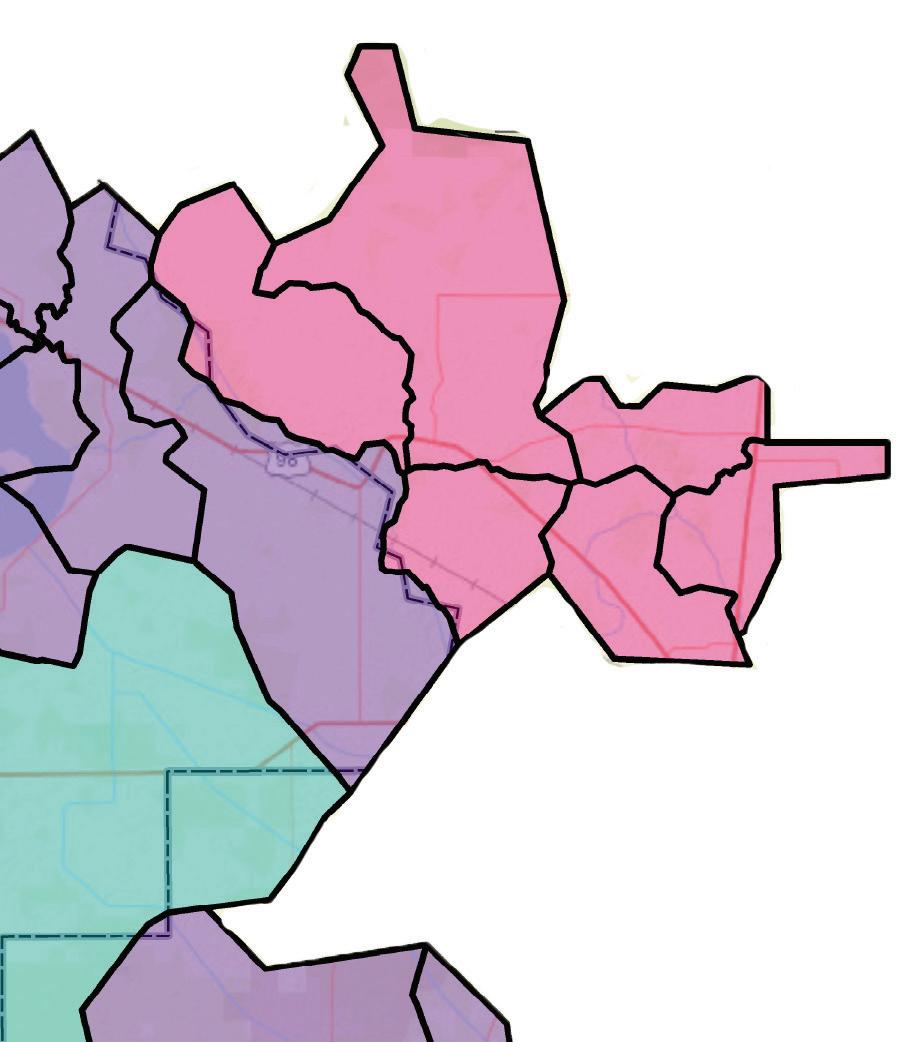









The geography of the readership area of this magazine is vast and beautiful, from lakes to oceans to parks to beaches. Some of you have views from your homes that rival the views of national parks.
From time to time, we will share some of the excellent reader photos in this space. If we use your photo here, we will send your choice of a $25 gift card to REI or Amazon.
To submit your photo, email a JPEG file to photos@floridacurrents.com. Include “Before You Go” in the subject line. Please share a bit about what inspired you to make your photo.
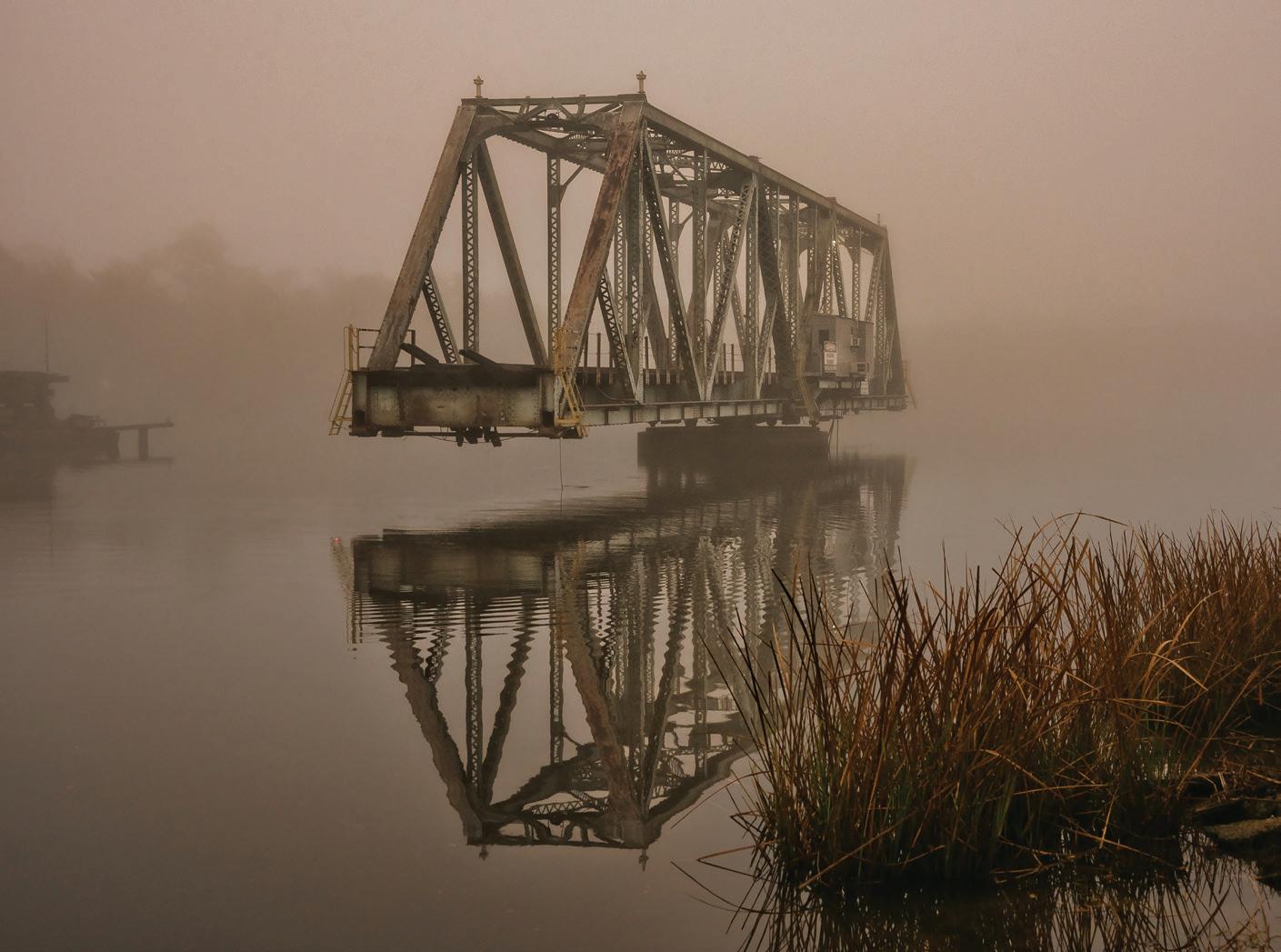

















The answer: Although tremendous strides have been made in











Aid Technology, those cost reductions have not been passed on to you. Until now... MDHearing
into

































863-946-6200 (member services) 844-201-7203 (24-hour phone payments) www.gladeselectric.com
7 a.m. to 6 p.m. Monday through Thursday
26733 U.S. Hwy. 27
P.O. Box 519
Moore Haven, FL 33471
214 SR 70 W. Lake Placid, FL 33852
Via the SmartHub app
~ 863-946-6200 (24/7 outage reporting)
Please have your account number ready.
John “Jack” Coxe, President, District 8 Lake Josephine, 863-414-3833
Lee Henderson, Vice President, District 6 Highlands Park, 863-633-9281
Shannon Hall, Secretary/Treasurer, District 4 Lakeport and Brighton, 863-946-3242
Donnie Lundy, Trustee, District 1 Moore Haven, 863-946-0402
Barney Goodman, Trustee, District 2 Hendry County, 561-414-8737
Mike Pressley, Trustee, District 3 Ortona and Palmdale, 863-673-9158
Brad Oxer, Trustee, District 5 Venus and Hicoria, 863-441-1866
Fred Tagtmeier, Trustee, District 7 Lorida, 863-214-4994
Angela Hodges, Trustee, District 9 Okeechobee, 863-801-3140
The Board’s next meeting is at 9 a.m. May 30 at Moore Haven Middle-High School. Any changes are posted in the lobby of both district offices.
Jeff Brewington, CEO
Courtney Brown, Chief Personnel Officer
Jennifer Koukos, Chief Communications Officer
Jennifer Manning, Chief Financial Officer
Michael Roberge, Chief Operations Officer
Wow! When you get something right, it really shows.
This year, cooperative member participation in our annual meeting hit a new record, with more than five times the ballots cast than in prior years. I chalk up that increase to our use of the SmartHub app for electronic voting. It made the process super easy. Even this old dinosaur figured it out on my own.
A total of 1,315 ballots were cast for the election of trustees in districts 2, 6 and 8, and approval of the minutes from our 2023 annual meeting. I’m pleased to report Barney Goodman representing District 2, Lee Henderson representing District 6 and Jack Coxe representing District 8 were reelected with 1,112, 1,106 and 1,069 votes, respectively.

Jeff Brewington
The minutes were approved with 1,214 votes for and 58 votes against. I look forward to working another year with these progressive member leaders. Look for more annual meeting details and grand prize winners in our June issue.
At the annual meeting, I spoke about the Glades Electric Charitable Trust. Unlike balloting, participation in Operation Round Up to support Charitable Trust grants to members and nonprofits has fallen. It’s now less than 50%.
The trust is supported by members who round up their monthly energy bill to the next even dollar. The most anyone could give in a month is just 99 cents. Those few cents add up and provide much-needed funds to help our neighbors.
The trust is run by a nine-member board appointed from the same nine cooperative districts.
Just a few weeks before our annual meeting, tragically, District 5 Director Lori Thompson was killed in an automobile accident. Our thoughts and prayers continue for her extended family.
The work of trust directors is no easy task. Lori had a heart for the trust’s mission, and she is deeply missed. If you have such a heart and live in District 5—covering Venus, Hicoria and Tasmania—consider applying to the board. You can reach out to me or the cooperative’s District 5 trustee, Brad Oxer. If you do not participate in the trust, consider joining now in memory of Lori’s good works.
